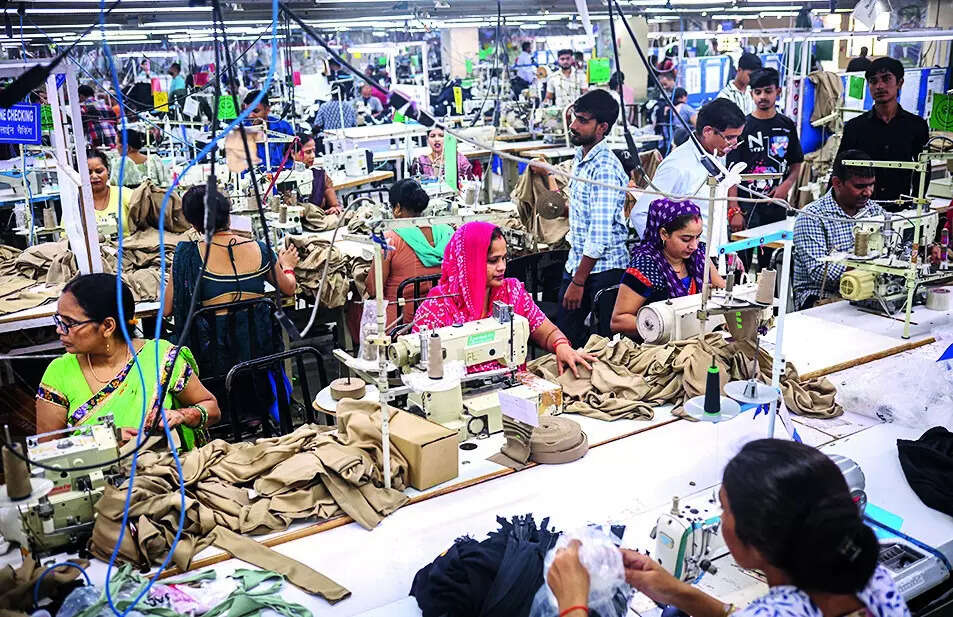Dear Readers,
Rain continues to shower over Mumbai, and the weather is delightfully pleasant. Lord Ganesha arrived this week, and Mumbai, along with many parts of the country, is in full celebration mode. The wafting incense, enchanting prayers, and scrumptious prasad make this one of the most joyful times of the
year. Families come together, pray, celebrate, and seek Lord Ganeshaâs blessings. May the Lord bless us all with great health and knowledge. While celebrations are in full swing, and I look forwar
d to visiting all the major pandals this weekend, there are two major developments.
Firstly, EY has published a report this week predicting that India will become a $34 trillion economy by 2034.
Second is the bad news we have been following extensively: Trumpâs bombshell 50% tariff has landed on India.
There is a saying: Desperate times call for desperate measures. I think India might need exactly the same. Here is my view.
India dealing with Trumperory pressure
Sectors like Textile & Apparel, Gems & Jewellery, Leather & Footwear, Marine, Chemicals, Steel, and Agriculture are under tremendous pressure, as broadly Rs 2.17 lakh crore of exports are at risk due to Trumpâs 50% tariff. Generally, the industry could have digested a 25% tariff, but
double is too tough to swallow. Along with the Indian government and policymakers, the industry at large is evaluating alternatives to deal with the impact. Importantly, the street view is that India
should not bend to Trump. Many CEOs are praising the government for its stand, but expect it to act far more rationally.

From a few colleges and universities banning US-made beverages to shoemakers, textile industry bodies, federations, associations, and corporates protesting against Trumpâs India blackmail, the common view is clear: India should not bend, but it must deal with Trump rationally. Experts believe
India should focus on boosting domestic businesses, from tourism to manufacturing, and deepen relations with other countries. The government should eliminate red tape and promote single-window clearances
.
ALSO READ-
Trump Tariffs: India's Defining MomentAccording to experts, in China, it takes only one year to set up a plant, including policy clearance and approvals. In India, it takes more than two years.
Top bankers and experts have also suggested creating a fund for affected
sectors and offering incentives for those starting and running businesses in these areas.
Indiaâs public capex is high, and the focus on infrastructure is notable, but incomplete projects leave a poor impression on investors. Leaders have suggested focusing on two to three major segments rather than spreading resources across the entire Make in India agenda. It is high time we
understood why corporations are not investing: private capex is at an all-time low, and capacity additions are not happening.
Can India export to new markets?
Some believe India can export to different countries; there are more than 100, just not the US. While this is a noble aim, the reality is different: it takes decades to explore and establish new markets. Indian exporters have likely explored many countries already, but there is a reason they have
been exporting to the US for decades.
With a 50% tariff, India will lose a notable business. Americans will show a cold shoulder to such high taxes. Indian companies and policymakers should not rest but continue to explore new markets. In the current geopolitical era, diversification is key. There is much to learn from China
here.
Despite previous discussions about private capex, corporations are not investing significantly. Most are debt-free, borrowing is easy, yet manufacturing and capacity addition are not picking up, these are the very factors that would boost growth.
ALSO READ:
Trump, not without tariffsIndiaâs counter strategy
In recent years, India has grown significantly and is marching toward becoming a developed nation. The government has many policies in place and is planning to revamp the central GST next week to boost consumption. India is pushing hard on public capex. Our auto industry is expected to become the
worldâs largest in the next five years, and aviation is already the third largest globally. Efforts to reduce fossil fuel imports and logistics costs are underway, and many projects are in the pipeli
ne.
While the EY predictions look too rosy now, remember India still enjoys a big demographic dividend and has a large consumer market, which can tilt the balance in its
favour
.
Unfortunately, India does not have the luxury of time. The wheels must change while the car is in full speed. Strong and desperate measures are needed; that is the requirement of the hour. Trumpâs policy will have a historic impact. How India deals with it, and how India Inc supports it, will be a
lesson for generations.
Please share your feedback, suggestions if any. You can reach me on amol.dethe@timesinternet.in
As usual, I am adding here the top 5 stories of the week, trust you will find them meaningful.-
ICAI President says new Ind AS amendments demand transparency, discipline and global alignment; will benefit CFOs
-
MCA tightens supplier finance disclosures from FY26; CFOs to face higher investor scrutiny
-
GST 2.0 could boost CV demand, ease tax complexity: Ashok Leyland CFO
-
CFOs brace for higher debt disclosures as MCA tightens loan covenant rules under Ind AS from FY26
-
Kamdhenu CFO sees 25% steel profit rise, paints business scaling to Rs 1,000 cr, bets on GST cuts
(Editor's note is a column written by Amol Dethe, Editor, ETCFO.
Click here to read more of his articles exploring several buzzing topics)
Happy Reading
Amol
Dethe,
Editor,
ETCFO